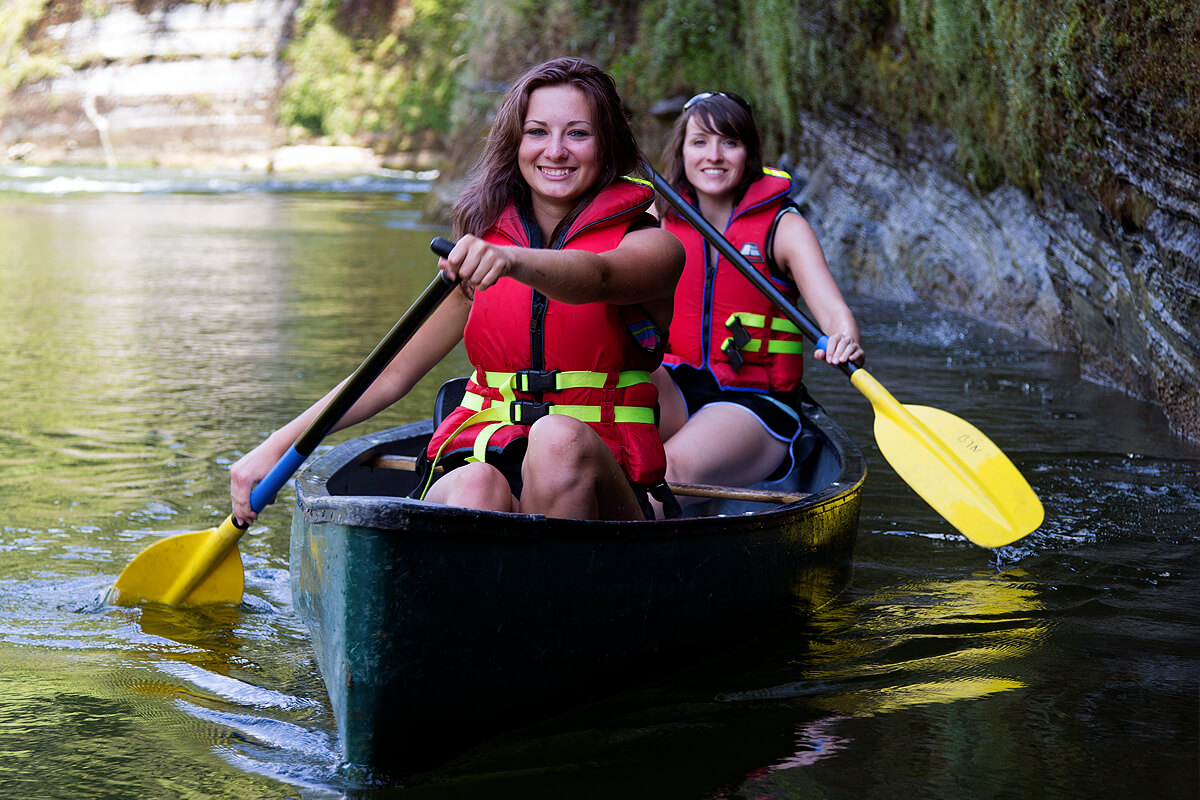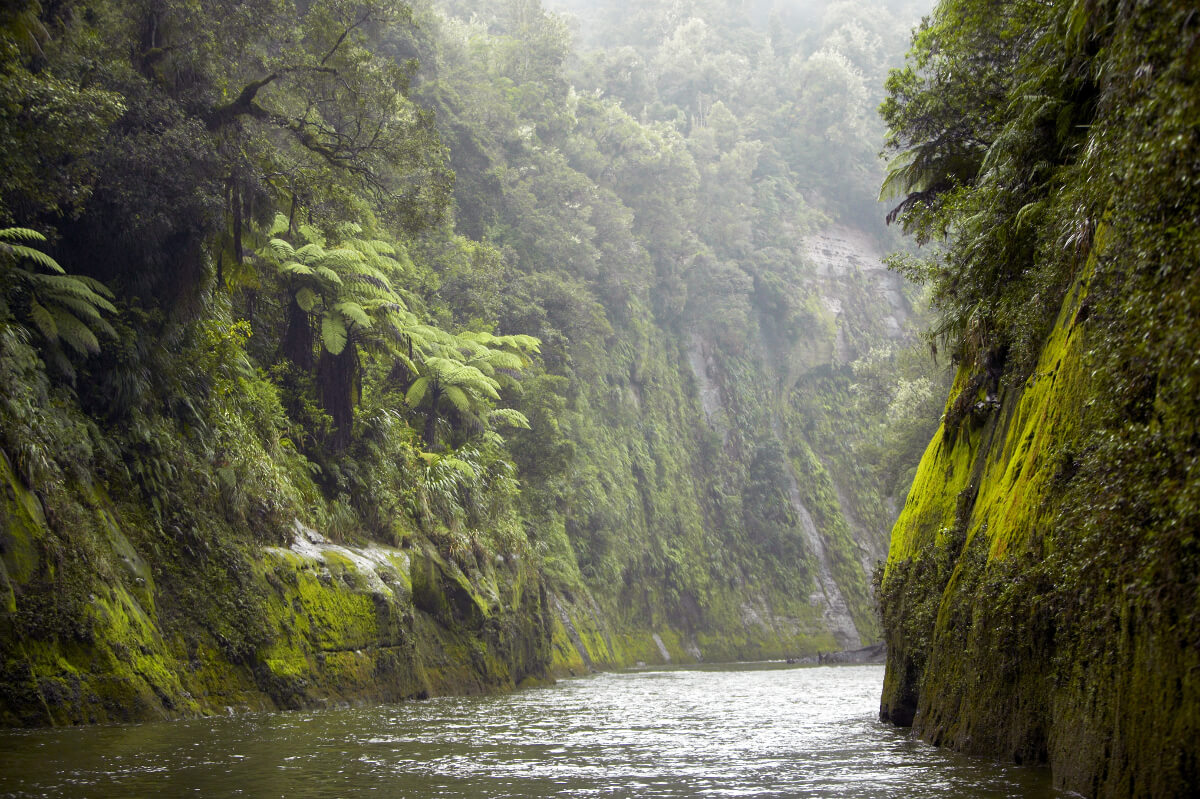The Whanganui River is handy to Ranfurly Cottage and is somewhere where you can tramp or walk, jet boat, kayak, canoe, cycle and sightsee.
The Whanganui River is 290 kilometres in length and is the third longest river in New Zealand. Although the River is not part of Whanganui National Park much of the land to either side of the river’s upper reaches is part of the Park.
The river rises on the northern slopes of Mount Tongariro, one of the three active volcanoes of the central plateau, close to Lake Rotoaira. It flows through the rough, bush-clad hill country of the King Country before turning south-east and flowing past the small settlements of Pipiriki and Jerusalem, before reaching the coast at Whanganui. It is the country’s longest navigable river.
During the early 20th century, the Wanganui River, as it was then called, was one of the country’s top tourist attractions, its rugged beauty and the Māori kainga (villages) which dotted the banks attracting thousands of tourists per year.
Today a visit to the Whanganui River provides a rich historical experience and an opportunity to enjoy a range of activities in an area where to some extent time has stood still.
Māori legend explains that when Mount Taranaki left the central plateau for the coast, the land was split open, and the river filled the rift made by the leaving of the mountain. According to Māori tradition, the river was first explored by Tamatea, one of the leaders of the original migration to the new land, who travelled up the river and on to Lake Taupo. Many places along the river are named in his honour.
The Whanganui River has always been an important communication route to the central North Island, both for Māori and for settlers. On one hand it is an exciting river, with many stretches of white water and over 200 rapids but for many years it was the principal route to the interior of New Zealand from the river mouth at Whanganui right into the Ruapehu District.
Prior to the arrival of Europeans, the area around the Whanganui was one of the most densely inhabited in the land. Unsurprisingly, with the arrival of the colonial settlers, the area near the river’s mouth became a major trading post.
Although it was already a significant route to the interior, the major development of the river as a trade route was by Alexander Hatrick, who started the first regular steam-boat service in 1892. The service eventually ran to Taumarunui where rail and coach services connected with points north. One of Hatrick’s original boats, paddle-steamer PS Waimarie, has been restored and runs scheduled sailings in Whanganui. Another of the Hatrick boats, MV Wairua has also been restored and can be seen on the river.


